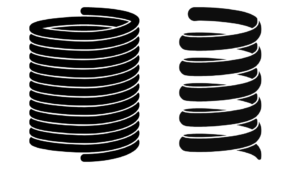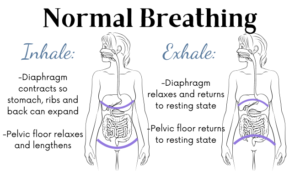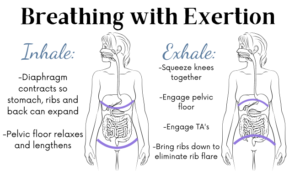Incontinence When Running? Here Are 6 Common Reasons Why.
Do any of these sound familiar?
- It’s a beautiful day, so you head out for a nice refreshing jog. All of a sudden you’re met with the uncomfortable feeling of wet underwear or pants. You’ve either slowly leaked or it happened all of a sudden. Either way, you’re not a fan of it.
- You really want to get back into running after having a baby, but every time you try, you leak and it’s just so uncomfortable.
- Your toddler dashes across the playground and you have to quickly run after him. With the sudden movement and spur of the moment sprint, your favorite leggings are now wet, you feel embarrassed, and you’re sans sweatshirt to cover the evidence.
Ugh, why!!!
First of all, know that you’re not alone. A whopping 44% of female runners leak (Pires et al., 2020). Also know that there are natural treatment options to stop.the.leak! Not only do I see it in my clinic all the time, but several studies have shown that with specific pelvic floor training it is possible to eliminate or reduce leaking with running (Pires et al., 2020).
Anyways, back to our scenario:
Not sure why, you assume your pelvic floor is weak so you start doing a bunch of kegels each day, popping a pad in before you run and you start to always go for black pants. For some reason, things are not getting any better, and actually seem to be getting worse.
You either:
- Stop running and look for a lower impact activity because you’re sick of leaking.
- Only run before you have anything to drink or eat in the morning.
- Keep running but just deal with pads and the discomfort.
- Look for help
Oftentimes people come to pelvic floor physical therapy and assume they leak with running because their pelvic floor muscles are weak. Is this the case? Once in a great while, but more often than not, there are other factors at play.
What are 6 common reasons people leak with running?
- Overactive pelvic floor muscles
- Underactive pelvic floor muscles
- Mixed or uncoordinated pelvic floor muscles
- Poor pressure management
- Running form that increases impact on pelvic floor
- Bladder habits that could use some fine tuning
What do these mean? Let’s delve in!
1. Overactive Pelvic Floor Muscles
This is when your pelvic floor muscles are in a shortened state, and hold tension. Oftentimes the muscles have a difficult time “letting go” and relaxing in order to fully lengthen. It may be difficult to feel movement of your pelvic floor muscles. Pelvic floor muscles need to be able to lengthen and contract through their full range of motion in order to work optimally with varying pressures (such as running, impact exercises, cough/laugh/sneeze). Think about a mattress spring that is squeezed together, versus a mattress spring that is in its regular state. The one in it’s regular state is a lot more responses and bouncy! We want responsive pelvic floor muscles so we can handle impact without leaking. In order to develop responsive muscles, it’s important to be able to lengthen or stretch the pelvic floor muscles first. Eventually you can strengthen through your full range of motion.

Check out this video for another example of why kegels may make symptoms worse if your pelvic floor muscles are overactive.
2. Underactive Pelvic Floor Muscles
This is when your pelvic floor muscles have a difficult time contracting or pulling up into a kegel. It may be difficult to feel movement, or take a lot of effort to engage them through partial or full range of motion. The ability to engage your pelvic floor muscles is needed to prevent leaking when there is extra pressure.
3. Mixed or Uncoordinated Pelvic Floor Muscles
This is when one side of your pelvic floor muscles are overactive and the other side is underactive. One side is held in a shortened or “tight” state, while the other side has a difficult time engaging or pulling up into a kegel. One side may contract or relax faster than the other side. The pelvic floor muscles need to be able to work together to help keep you leak free.
4. Poor Pressure Management
Your diaphragm, core and pelvic floor all work together to manage intra-abdominal pressure and keep you continent. Incorrect coordination can lead to leaking, exacerbation in prolapse symptoms and/or diastasis recti or hernia. As you inhale, your pelvic floor, abdominals, low back, and side body should relax and expand. As you exhale, they should naturally recoil to their resting position. If you’re exercising or exerting yourself, they should engage as you exhale.


5. Running Form that Increases Impact on Pelvic Floor
Suboptimal running form can put excess pressure on your pelvic floor. There are a lot of things to look at in terms of form, which is why a running analysis is so helpful. Your core, diaphragm and pelvic floor work together to keep you continent. For these muscles to work optimally, your ribcage should be stacked over your pelvis. Your ribcage should not be flared out or gripping down. Your pelvis should be in a neutral position and not tilted one way or another. Hip, foot and knee positioning is important. Cadence, heel strike, push off, pelvic floor mobility, and more can all play into continence while running.
6. Bladder Habits That Could Use Some Fine Tuning
Working towards optimal bladder habits can make a huge difference for continence while running. If you know what your bladder irritants are, you can avoid them before you run. There are also methods to train your bladder so that you don’t need to go as frequently or urgently.
Where Do I Go From Here?
Other factors can come into play as well, but these are some of the more common ones I see in my practice. A thorough assessment is helpful to determine why you leak. It very well may be a completely different reason than why your friend leaks, and what exercises work for one person may exacerbate another person’s symptoms. Working with a physical therapist who specializes in pelvic health and running can help you get on the right track to determine the reason why you’re leaking. They can then work with you to create a personalized plan to help you work towards leak free running! You’ll be so happy to ditch the pads and hit the trails for some good runs!
If you’re interested in learning more, contact Dr. Jess at Jess@bloomptwellness.com to setup a free 15 min phone consult.
References:
Pires T, Pires P, Moreira H, Viana R. Prevalence of Urinary Incontinence in High-Impact Sport Athletes: A Systematic Review and Meta-Analysis. J Hum Kinet. 2020 Jul 21;73:279-288. doi: 10.2478/hukin-2020-0008. PMID: 32774559; PMCID: PMC7386138.





